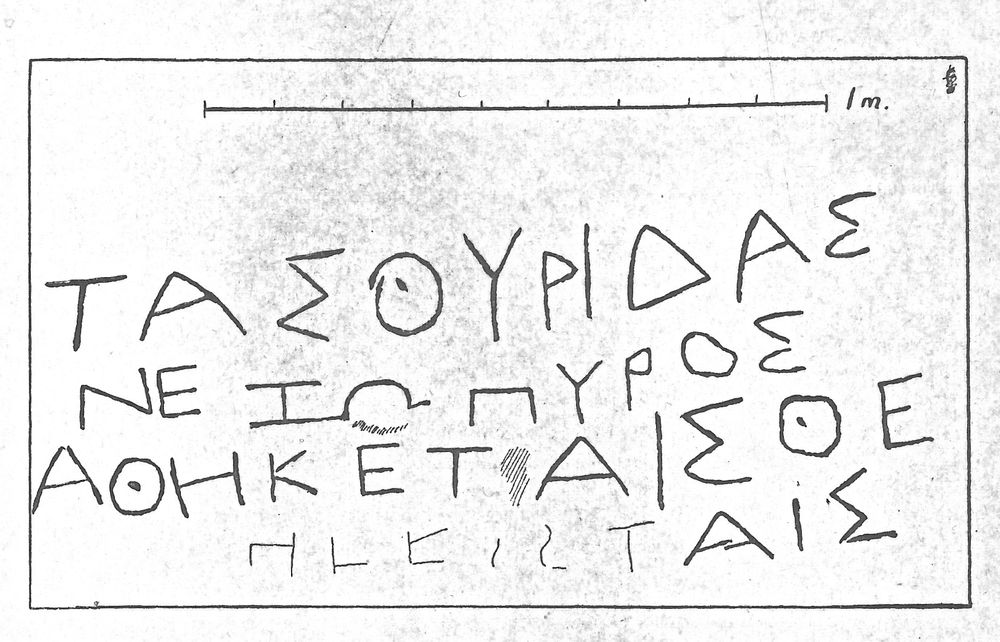EpiDoc XML:
IGCyr0518002
Trismegistos ID:
738327
Source description
Support: Within a rock-cut chamber (dimensions unknown).
Layout: Inscribed in a sunk rectangular panel. There are holes at the edges of the rectangle.
Letters: Irregular lettering, height unknown; zeta with vertical stroke, dotted theta, some sigmas slightly slanting, widely open omega.
Date: Possibly Hellenistic, but too rough to date with any precision (lettering).
Findspot: First copied by J.-R. Pacho in 1825 at Cyrene ➚: Sanctuary of Budaraj.
Place of origin: Findspot.
Last recorded location: Copied by S. Ferri between 1919 and 1922 in situ. Observed by J.M. Reynolds in situ. Seen by S. Marini in 2008 in situ in the Sanctuary of Budaraj.
Text constituted from: Transcription from previous editors.
Bibliography
CIG 5183, from Pacho 1827, pl. LXVI.4; Ferri 1922, n. 1 and fig. 13, whence SEG, 9.727; IGCyr 051800 ➚.
Cf. Ferri 1923, pp. 10-11; Husson 1983, p. 162, footnote 41, whence SEG, 33.1614; Laronde 1987, pp. 428-429; Hellmann 1992, p. 166; , pp. 310-311, pl. XXIX-XXX.
Text
Apparatus
1: Ο[.]ΡΑ Reynolds' reading: ΒΑΛΑΔ Pacho 1827; Ferri 1922 Ferri does not mention this line
2: θ̣υρίδας Reynolds' reading: ὀφρίδας CIG
3-4: ἀ̣ν|έθηκε Reynolds' reading: ἀνέθηκε Ferri 1922, Pacho 1827 the whole word on line 4
French translation
[---] Zôpyros a consacré les niches aux déesses.
English translation
[---] Zopyros dedicated the niches to the goddesses.
Italian translation
[---] Zopyros ha dedicato le nicchie alle dee.
Arabic translation
[---] كرس زوبيروس المِشْكَاوَاتٌ أو الكُوَّاتٌ للمؤلهين
Commentary
Ferri regarded the text as contemporary, or nearly so, with the construction of the chamber and stated that it had been subsequently covered with stucco several times.
It seems possible that several texts have been cut at different times in this panel.
For θυρίς meaning 'niche', already suspected by Ferri, see Husson 1983, p. 162, footnote 41, who gives papyrological and epigraphical parallels and also Hellmann 1992, p. 166.
At l. 5 Ferri thought that the goddesses were the Nymphs, on behalf of his interpretation of IGCyr0519002, which is far from clear. But Laronde, followed by Marini, argues that the terracottas and sculptures found in the cave testify that they were mother-goddesses favouring fertility.
CC BY-NC-SA 4.0 Deed Attribution-NonCommercial-ShareAlike 4.0 International License.
All citation, reuse or distribution of this work must contain a link back to DOI: https://doi.org/10.60760/unibo/igcyrgvcyr2 and the filename (IGCyr000000 or GVCyr000), as well as the year of consultation.

